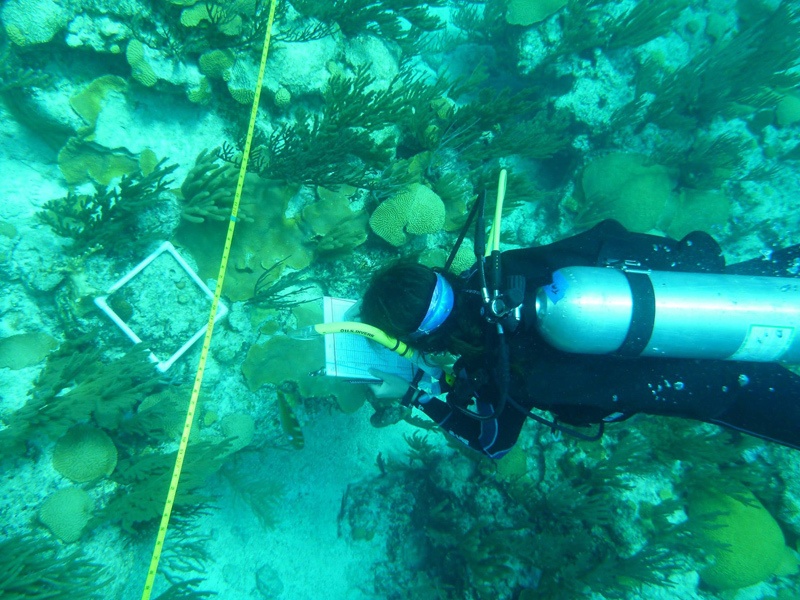Historically abundant predatory fish such as groupers and snappers remain at critically low numbers on Bermuda’s reefs based on international standards, according to a recently released report that monitored their status and trends by Bermudian scientist Dr Thaddeus Murdoch and his local team of research associates through the Bermuda Reef Ecosystem Assessment and Mapping [BREAM] Programme.
A spokesperson said, “As a consequence, coral-killing damselfish, which are eaten by groupers and snappers, have doubled in abundance within the lagoon since 2010, reducing the quality of reefs across an area bigger than the landmass of Bermuda.”
“In good news, however, hard corals so far remain at good levels across most reefs, and the protected parrotfish, important for keeping marine plants under control and for making beach sand, remain in high numbers.
“The report, Status and Trends of Bermuda Reefs and Fishes: 2016 Report Card, is available at BermudaBREAM.org.”
“The report describes baseline information collected from 2004 to 2011, and compared to updated data collected by resurveying reefs in 2015 and again in 2016 by Dr. Murdoch and his team of local and international scientists and graduate students. The BREAM team, as the Bermuda component of a cross-Caribbean monitoring programme of the Global Coral Reef Monitoring Network, measured the amount of corals, marine plants, plant-eating fishes and predatory fishes at 38 reefs located across all of Bermuda’s reef habitats.
“Funding and support for the research was provided by: XL Catlin, the Bermuda Zoological Society, Murdoch Marine Ltd and the Gosling family. Partner Re; the Overseas Territories Environmental Programme Fund at the UK Foreign & Commonwealth Office; the Bermuda Government; and the Stempel Foundation provided support for the baseline data collected in 2004 to 2011.”
Read more here: http://bernews.com/2018/05/report-some-fish-at-critically-low-levels/

